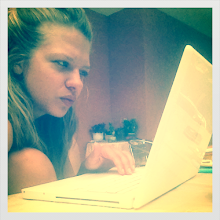 When I started learning jazz I asked my teacher to recommend me some good material to study from, considering I was only classically trained in music, to understand jazz better. She said - Get the Mark Levine book "Jazz Theory"!
When I started learning jazz I asked my teacher to recommend me some good material to study from, considering I was only classically trained in music, to understand jazz better. She said - Get the Mark Levine book "Jazz Theory"!This guy made it much easier for everyone by writing books that bring jazz closer to people. I simply love the way he starts his Introduction in Jazz Theory:
A great jazz solo consists of:
1% magic
Explainable
Analyzable
Categorizeable
Doable
This book is mostly about 99% stuff.
There is no one single, all inclusive "jazz theory". In fact, that's why the subject is called jazz theory rather than jazz truth. The only truth is in the music itself.
Ok, so this sound interesting already. He's honest, and says it the way it is. He says that most of what he has learned is from the masters themselves, by transcribing directly from the recordings. He also learned from musicians that knew it better by spending time with them and learning from experience. I totally agree with this fact. You may study for years in various schools, through various books, but the most valuable experience is really when you learn from someone that has the experience and can show you how to do it.
Mark began playing jazz as a teenager in Daytona Beach, Florida. Continuing his education in Boston and New York, Mark studied with Hall Overton, Herb Pomeroy and Jaki Byard, before moving to California in 1966.
A key phase in Mark's education was a year spent in Woody Shaw's quartet. "Every night was serious school," says Mark.
Mark spent significant time working with Joe Henderson, Blue Mitchell, David Liebman and Harold Land, composing all the while. Joe recorded two of Mark's tunes on "Canyon Lady," the late tenor giant's only Latin jazz album. Mark returned the favor by playing two of Joe's classic compositions, "Inner Urge," and "A Shade Of Jade," on his 2000 release, "Serengeti."
Check out more info about Mark Levine and his work:
Mark Levine Official website








No comments:
Post a Comment